Annular solar eclipse October 14, 2023
The first of two great American solar eclipses happens today! The “ring of fire” solar eclipse of Saturday, October 14, 2023, will be visible to those along a narrow path sweeping over North and South America. At mid-eclipse, those along the eclipse path will see the sun in a ring around the moon. Meanwhile, those outside the shadow path will see a partial solar eclipse. Important: this is not a total eclipse. And the first thing to remember, at no time during this eclipse will it be safe to look at the sun without proper eye protection.
The second great American eclipse will come early next year. It’ll be the total solar eclipse of April 8, 2024. Read about the April 8 eclipse here.
Click here to learn how to watch a solar eclipse safely.
The 2024 lunar calendars are here! Best Christmas gifts in the universe! Check ’em out here.
Seeing the eclipse from your location
You can find local circumstances for a selection of cities at Fred Espenak’s EclipseWise website:
– If you can see the annular phase in the U.S.
Fred Espenak provides all times in local time. In addition, the sun’s altitude and azimuth, the eclipse magnitude and obscuration are all listed for the instant of maximum eclipse.
ON the other hand, are you outside the U.S. and Canada? Or do you want to check another source? In that case, try these sources:
– The Solar Eclipse Circumstances Calculator is an interactive web page
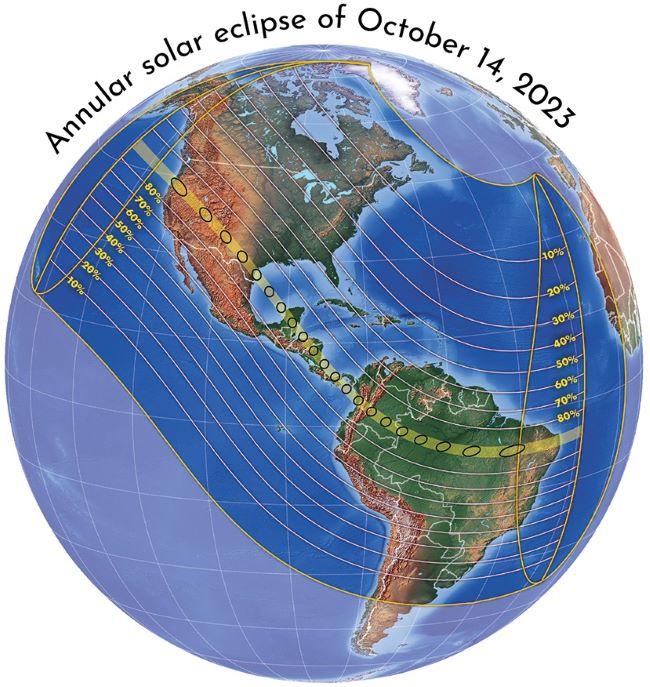
Solar eclipse livestreams here
Virtual Telescope live broadcast
Great American Eclipse live broadcast
University of Texas McDonald Observatory live broadcast
Ways to watch a solar eclipse safely on October 14
The video below offers tips on how to watch the annular solar eclipse of October 14, 2023, safely. Or click here for a printed article on solar eclipse safety. And, by the way, Solar Cycle 25 is ramping up. That means there are going to be more and more spots on the sun in the coming years. With that in mind, any of these safe solar viewing methods can let you enjoy tracking sunspots in the coming years.
Why is it called an annular eclipse?
Astronomers call this an annular eclipse of the sun. That name comes from the Latin word for ring: annulus. It refers to the outer rings of the sun’s surface, visible at mid-eclipse. And, though not as dramatic as a total solar eclipse, this eclipse will be fascinating to view. You really only need to know two things. First, how much of the sun will be covered from your location? Second, what time is the eclipse from your location? More about that in the next section.
Overall, the eclipse will last 214 minutes. At maximum eclipse – for those along the eclipse path – the sun will be just over 90 percent covered by the moon. The part of the sun that will visible is its outer surface. So essentially, an annular eclipse is a partial eclipse, throughout the event. And remember, use eye protection!
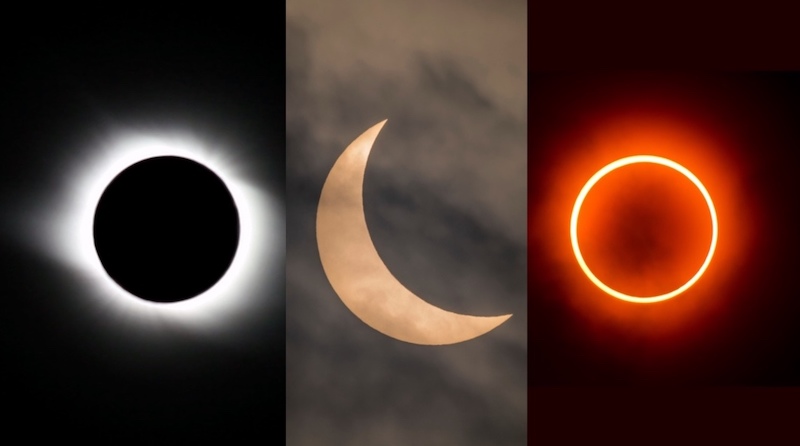
More annular solar eclipse maps from Great American Eclipse
Michael Zeiler of GreatAmericanEclipse.com has generously given us permission to share his eclipse maps for the annular eclipse. Here, you can get a better idea of where you’ll want to be and when to see this unique phenomenon.
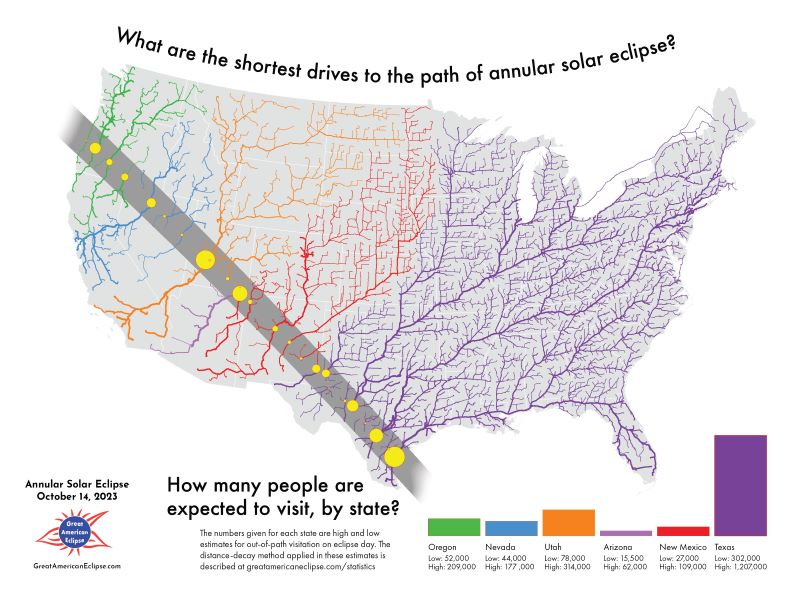
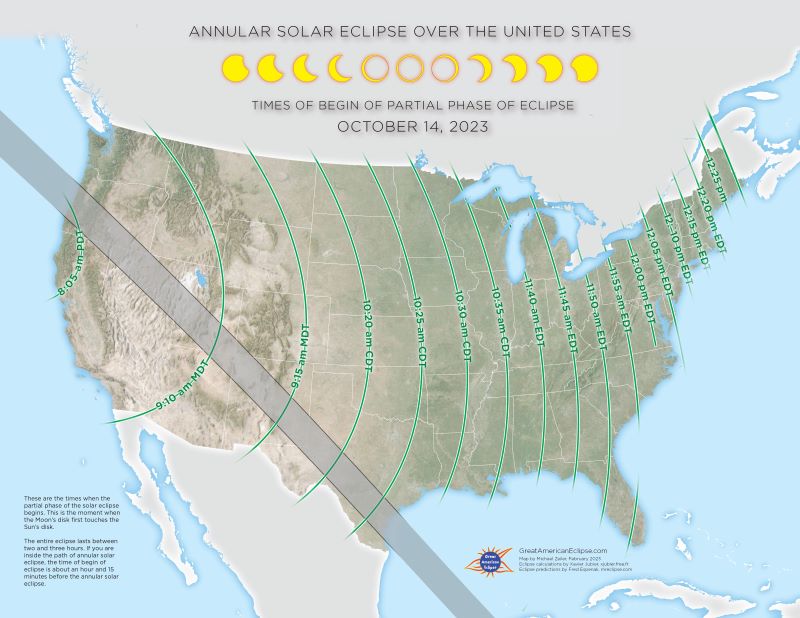
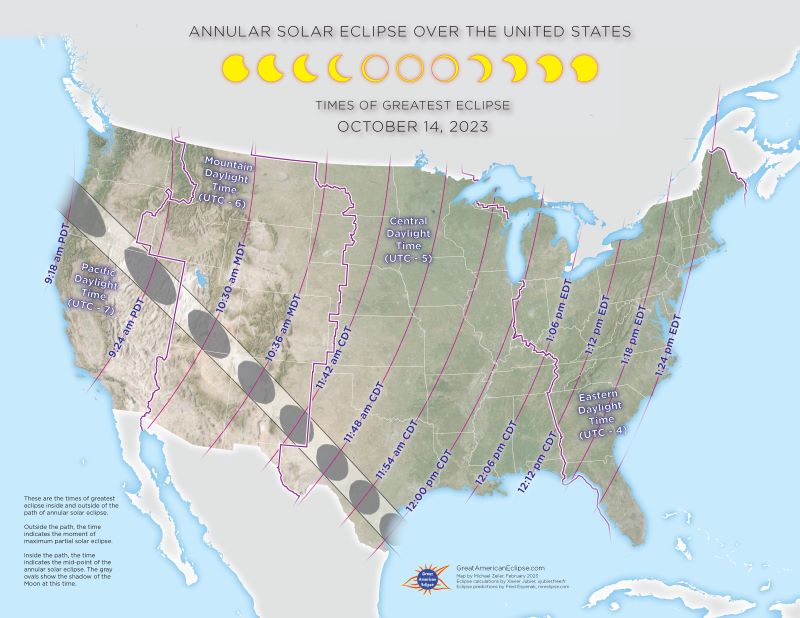
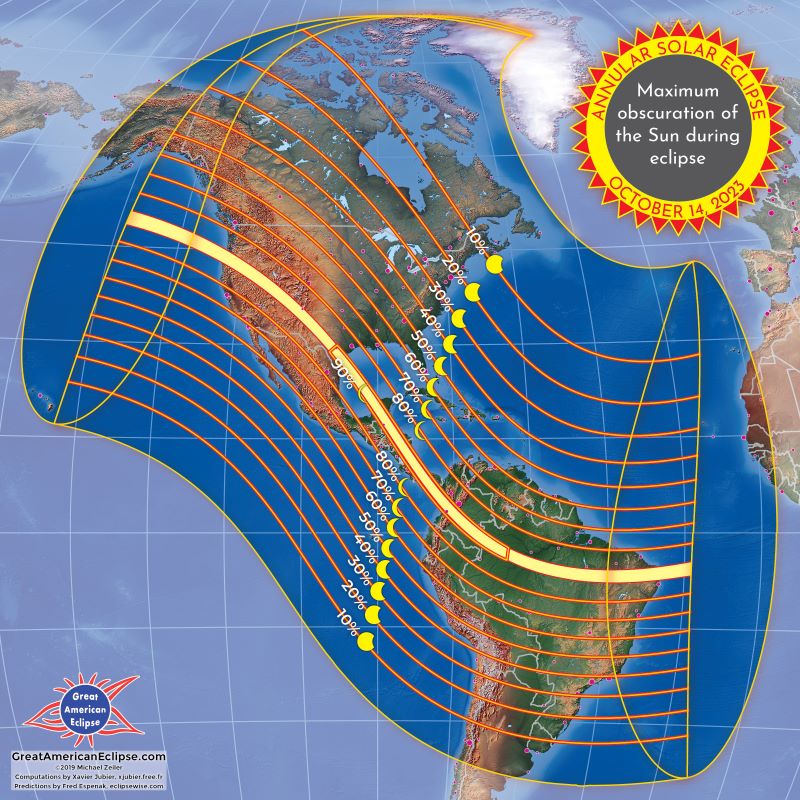
Overview of the annular solar eclipse path
On October 14, 2023, the path of the annular solar eclipse starts in the Pacific Ocean, coming onshore in Oregon. Then, the path heads southeast through Nevada, the Four Corners area and Texas. Later, it crosses the Gulf of Mexico and Yucatan Peninsula plus parts of Central America. Finally, it crosses Colombia and Brazil in South America.
To be sure, the closer to the annular path you are (the red line on the chart at top), the more the sun will be eclipsed by the moon. Likewise, outside of this path, viewers will see a partial solar eclipse.
Notably, over the course of three hours and 34 minutes, the moon’s antumbral shadow will traverse an 8,574-mile-long (13,800-km-long) track covering 0.57% of Earth’s surface area.
This is 2023’s 2nd solar eclipse
The first solar eclipse in 2023 – on April 20, 2023 – was a hybrid solar eclipse whose path of totality passed over North West Cape, a remote peninsula of western Australia. In a hybrid solar eclipse, you see either an annular solar eclipse or a total solar eclipse, depending on your position along the central eclipse path.
October 2023 and April 2024 eclipses
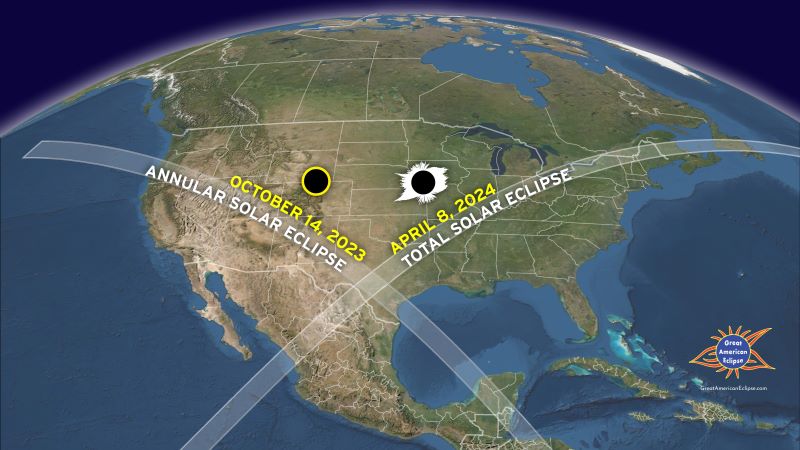
And there’ll be a similar eclipse in 2077
According to the renowned astronomer Guy Ottewell, a very similar annular eclipse to the eclipse on October 14, 2023, will occur on November 15, 2077. Aren’t the predictable cycles of the cosmos amazing?
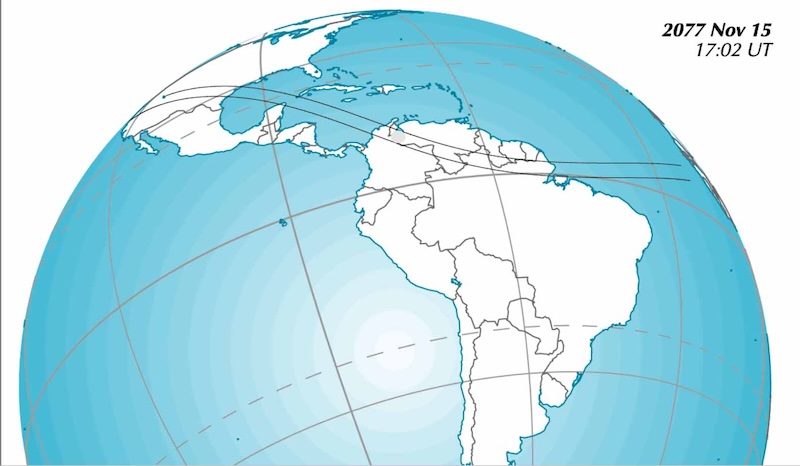
Bottom line: The October 14, 2023 annular solar eclipse will cross the US, Mexico, Central America, Colombia and Brazil. Maps and more here.
Read more:
The total solar eclipse of April 8, 2024
Annular solar eclipse of October 14, 2023, from Michael Zeller
October 14, 2023, Great American Eclipse from TimeandDate.com

